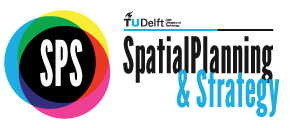Province’s added value in territorial development
Text by Guus van Steenbergen
PhD Candidate Spatial Planning and Strategy, Urbanism, TU Delft
A.A.C.vanSteenbergen@tudelft.nl

My PhD project at TU Delft/Architecture and Built Environment is entering a next phase. A committee that evaluates quality and progress – and gives the GO / NO GO – said that I can continue with the research. The approach, relationship with policy practice and initial elaboration scored positively. The key issue of the research is ‘how the province, as one of the participants in network governance, uses its competences in metropolitan area development’.
In two case studies in South Holland and two areas outside (Arnhem-Nijmegen and Eindhoven-Helmond). In two steps I analyse the policy processes and their effects on the physical environment.

Triangle Rotterdam-Zoetermeer-Gouda

The Hague-Rotterdam area
In the first step I register facts, figures and images by means of an analytical framework. The main line of the analytical framework is: the context (the environment of the issue), the content (strategy, plan, program) and the process (way of dealing with the question). These three dimensions have strong interactions and form the spatial ‘trade of.
The second step gives an assessment of the provincial actions, using ‘action dimension’. Indicators to determine the acting dimension are: initiator, facilitator, (creative) coordinator and decision maker.
At the end (in the final dissertation) conclusions are drawn and recommendations are done for the future role of the province, e.g. in the implementation of the Environmental Act, knowing that today the social context is different from the context in the past and will probably be differ in the future.
